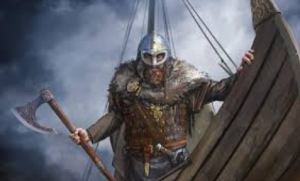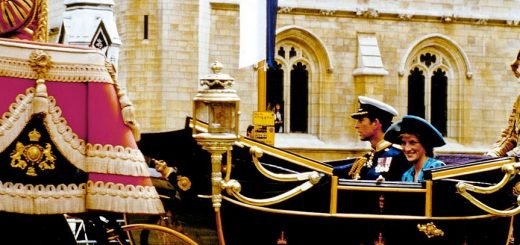Viking History Explained
The Vikings were ancient Scandinavian sea travelers and warriors who raided the British Isles and some parts of Europe from the 8th to 11th century. Many historians agree that the Vikings were the first settlers in North America. Scandinavia (formerly Norse) is a region in North of Europe which comprises Sweden, Denmark, and Norway. Iceland and Finland are sometimes considered to be part of Scandinavia. The Vikings spoke the Norse language. They traveled in narrow wooden ships called longships (Viking ships). Using their advanced sailing and navigational skills, the Vikings extended their voyages to North Africa, Central Asia, the Mediterranean, and the Middle East.
Exactly how far did the Vikings Sail?

The Vikings traveled in properly constructed ships, known as longships.
As a result of their expansion across seas, the Vikings established governments in different areas of northwest of Europe, Ukraine, Belarus, and European Russia. The rapid spread of the Vikings significantly influenced the diffusion of the Norse culture into modern-day Scandinavian. At the same time, foreign cultures and practices were also adopted by the Scandinavian people. Historians have struggled for years to correctly conceptualize the Vikings. Some artists have viewed the Vikings as aggressive sea pirates who adventured Europe in the early 19th century. Other representations of the Vikings include noble savages who wore horned helmets. These are all cultural myths which have not been proven.
The Etymology of the Word, Viking
There have been several suggestions and disagreements about the etymology of the word, “Viking”. Some theorists propounded that Viking might have been derived from Viken – a historical district in Norway. They also suggested that Vikin could mean a person who hailed from Viken. However, there is a counter-theory to that one. It has been understood that people who lived in Viken were called Vikverir, not Vikin. Despite the diverse and contradictory etymological meanings of the word Viking, it was added to Modern English (in the 18th century). The word Viking has since evolved and taken several meanings such as Viking (as a noun) means, ancient Scandinavian sea raiders. As an adjective, Viking qualifies the artifacts, cultures, time and ideas associated with the ancient seafaring Scandinavians. As a result, we have expressions such as the Viking age, Viking art, and Viking ship etc.
How it all began and the Legacy left behind by the Vikings

The Viking army invaded many nations.
The Viking Age marks the period of 790 to about 1066 when the Viking people raided countries. Their main sea routes to the south were the Norwegian Sea and the Baltic Sea. The Normans were members of the Viking people who raided Normandy (in France) and England in 1066. After their invasion of England, two Vikings rose to the throne and became kings of England.
The Viking sailors also constructed roads to the new lands in east, north, and west. This led to different settlements in Orkney, Shetland, Iceland, Greenland, and the Faroe Islands. Pieces of Shreds of evidence from Archeology also predict that the Vikings got to Baghdad – the Iraqi Capital. They traded goods such as tusks, furs, boat sealants. Shockingly, they also traded slaves. Some of their trading ports were Birka, Jorvik, Hedeby and Novgorod.
The Norwegians explored places such as Ireland, Scotland, Greenland and Iceland. The Danes went to England and France (Normandy). The Swedes took directions to the east and founded the Kievan Rus’. According to Icelandic sources, a lot of Norwegian Vikings also progressed to the east of Europe. It is important to note that during the Viking era, modern-day countries such as Norway, Denmark, and Sweden did not exist. They had homogeneous language and culture except for geographical coordinates. It was only after the end of the Viking age that the individual kingdoms slowly branched into distinct nations. Names of Scandinavian kings began to pop out during the latter part of the Viking Age. To Scandinavians, the end of the Viking Age marked the beginning of their Middle Age.
The Rationale behind the Vikings’ Raids

The main reason behind the numerous raids by the Vikings is still debatable.
The motives of the Viking people for expanding still remain a debatable topic. Nordic historians suggest that an ancient king of the Franks named Charlemagne forcefully converted pagans to Christianity and baptized them. As a result, the Vikings and other pagans fought back in revenge. The Vikings probably also went on a rampage because of a scarcity of resources. It has been opined that the Vikings saw weaknesses in the regions that they could exploit to enrich themselves. For example, England was an easy target back then because it was plagued by internal divisions. And on top of that, they didn’t have a navy.
Viking Culture, Language and Weapons
In terms of culture, the Vikings did have an alphabet system with which they described themselves on runestones. Irrespective of that, they are usually described as having a non-literate culture. Archaeologists have found different ships used by the Vikings. Their popular ship was the Longship. It was designed for warfare, speed and safe navigation (irrespective of weather conditions). The Viking sports was more of training themselves for wars. They did fist fighting, wrestling, swimming, climbing mountains etc.
How about their weapons? How did they fight wars? The rich Vikings possessed helmets, shields, mail shirts and swords. Male Vikings were permitted to own weapons such as spears with bows and arrows. The Vikings left great legacies in art, technology, and seamanship. Their 200-year influence on Europe left tales of colonization and robbery.
The Dusk of the Viking Age
From the onset of the Viking Age, Scandinavia went through a lot of cultural and political changes. Towards the end of the 11th century, the Catholic Church empowered royal dynasties to exert authority over the kingdoms in Denmark, Sweden, and Norway. Christianity began to rule again in Norway and Denmark and dioceses were established. By 1103, archbishops took offices in Denmark and Norway. The influx of Christianity saw preaching against slave trade. When slavery diminished, the Scandinavian rulers (Vikings) lost interest and profit in the slave business. Eventually, the Viking Age elapsed before the 12th century.
You may also like: Everything you need to know about Odin – the All-father God in Norse Mythology



























